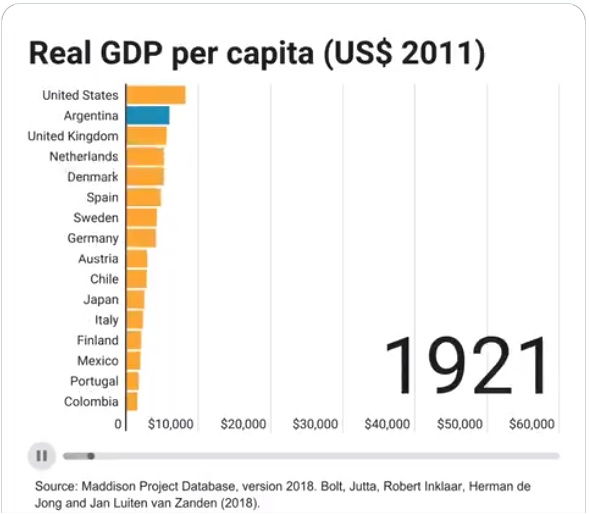 Michael Fumento
– February 25, 2021 @ American Institute for Economic Research
Michael Fumento
– February 25, 2021 @ American Institute for Economic Research

Granted, that’s nonsense. Respondents are telling pollsters what they think are the “right” or “responsible” answers,” as when during the energy crisis pollsters added the check or trick question, “Have you installed a thermidor in your car to improve mileage?” Most respondents answered yes. Actually “thermidor” is either a way of cooking lobster or “a moderate counterrevolutionary stage following an extremist stage of a revolution.” Um, with people, not lobsters…
Here we know respondents are fudging from the “look around you” factor. Even now if you look at a crowd of Americans in a place where masks aren’t required, it’s doubtful you’ll find three-fourths wearing masks and you yourself almost certainly don’t wash your hands or use sanitizer as often as you did, say, 10 months ago. We’re all suffering from pandemic fatigue and as time goes on, as more of the population is vaccinated, and as more drugs are discovered to lessen severity and mortality these numbers will further decline.
Still, it is important that people are so cowed that they believe they should lie to anonymous pollsters and engage in virtue signaling (whether at Tom Cruise decibel level or lower) and theater. And we know that even now the media and public health community are actually ramping up their efforts, insisting on first two masks and then three masks, then four layers of masks. Which would mean that if both the sender and receiver followed protocol, there would be eight layers of masks. Where does it stop? Even razor manufacturers quit at five blades. And never mind that none of these masks can stop aerosolized virus that are so tiny it would be like slapping one chain link fence atop another to keep out a mosquito.
The “masks are magic” purveyors also claim that masking and anti-social distancing have dramatically reduced flu transmission.
Indeed, consider one advocate of the permanent Covidocracy, the chief quality and patient safety officer at The Ohio State Wexner Medical Center who conducted the aforementioned self-serving poll.
“Masks and physical distancing are still our best weapons for limiting spread and, now that we have a vaccine, will make those precautions even more effective and will drive new cases way down if we stay the course,” said Dr. Iahn Gonsenhauser. (With a name like that, if he’s not an authority who is?) Further, “Flu cases and hospitalizations are way down compared to recent years,” he said. “A lot of that is likely because precautions like masking, physical distancing and hand hygiene are working to prevent the flu” and “I think a lot of people realize what we’ve learned from COVID-19 can be applied more generally to keep our population healthy.”
Hmm… so even though we had two diseases that spread in the same way, one was dramatically decreasing (at least allegedly) because of certain measures while the other was sharply increasing? There’s a lot more to the Great Flu Disappearance than we’re being told.)
But it’s hard to deny the cruel logic that if you keep visitors at long care health facilities at least six feet away from visitors from October until March and add in 8 layers of mask between them, while you will increase the rates of depression and presumably what’s popularly called “broken heart” mortality from stress, you will also presumably reduce transmission of flu and other airborne pathogens. And people like the good Dr. Gonsenhauser, or for that matter Dr. Anthony Fauci and all the other media darlings suffer from tunnel vision that’s about a pinhole wide.
They don’t care about economic impacts, including those that cause health problems such as malnutrition and therefore are associated with the myriad pathogens that prey on the weak. It’s just Covid-19, Covid-19, and Covid-19. (Or flu, when convenient.) They also receive their training from and are locked in a feedback loop with people who, frankly, have the totalitarian mindset that people cannot be trusted to make their own decisions whether economic or health and we need an iron hand, even if wrapped in a velvet surgical glove, to make them do what’s best for them. No, it’s not a coincidence that the current WHO head is a Marxist and presumably his predecessor was a member of the Chinese Communist Party. Commies are attracted to public health.
Even applying the libertarian dictum that “your freedom ends where my nose begins” can be used to argue, “What right have you to do anything to send your virus into my olfactory system?” So it’s not enough to say “If you’re worried, stay masked, stay at home, wear a plastic bag over your damned face, but leave me alone!”
Some ignorami also claim mask-wearing is part of “Asian culture” and can just as well become part of that in the West. No, as I have personally seen and others have written, actually in just some Asian countries those who believe themselves infected with an airborne pathogen often wear a mask out of politeness, not fear of others or government mandates. They never wore them as shields, except outside in heavy air pollution common to some Asian cities. Nor did they engage in anti-social distancing. Indeed, massive overcrowding in the big cities means their “comfort zones” regarding other people have traditionally been much smaller than what you find in the West. If you’ve ever seen professional “subway” packers in Japan, you would know that. Sardines get more breathing room.
So, how can you reason with people besieged with post-apocalyptic horror stories from the media, trusted public health agencies, and power-hungry politicians? Well, being the eternal optimist I am I’d say right now you really can’t. During a mass hysteria (mass psychogenic illness), just as horses sometimes run into the flames of a barn fire, people don’t think very clearly. That’s. Why. It’s. Called. Hysteria.
But yes, the alleged infections and deaths are indeed plummeting, the vaccine programs in many countries are indeed underway, and we keep hearing about new (albeit mostly untested) treatments that could reduce mortality.
Maybe very soon will be the time to start appealing to the masses using the same formula we use for other causes of death and illness or injury. That means choosing between one of the two major Covid-19 shibboleths. Either, “All lives matter” or “Even if it saves just one life.” And since it’s impossible to apply the second, we must apply the first. We must make hard choices because we cannot extend all lives indefinitely. As it happens, with novel coronavirus being essentially a disease of the old and infirmed (Yes, the media scour the world for exceptions and sometimes invent them) it can be rather easier here than with other causes of death and illness or injury.
Consider the 55 mile-per-hour speed limit I discussed in my last article here. First adapted as a fuel-saving measure and when fuel was no longer scarce kept on as a safety measure, it was maintained as long as Newton’s Law of Inertia allowed but eventually gave way to 65 mph and then to reason, returning the setting of speed limits to the states. Yet there is some evidence that the national speed limit saved some lives even if not in the direct manner you might expect.
Problem is, that being the case, why stop at 65 or 55? Cut the 55 in half and you would definitely see a reduction in highway carnage. And mind, highway death victims are demographically almost opposite of Covid-19 ones. They cut across the age and health spectrum, rather than picking out the oldest and most infirm.
Incidentally, an alternative would be to demand that even the cheapest new cars sold have all the safety devices available in even the most expensive cars. After all, remember Ford’s infamous Pinto calculation? The response is that safety is a scarce commodity with a price tag. Automatic braking found on some luxury cars could well put the price of that new Hyundai you’re eying out of reach. Then you will keep driving an older car that doesn’t even have the safety mechanisms of the new Hyundai.
But historically we have made our peace with certain activities that can be dangerous and in modern times turned not to extreme measures but reasonable ones. Hence alcohol is truly a monster drug in terms of damage to yourself through disease and accidents, damage to others through accidents, and a wonderful way to end marriages and other relationships. But prohibition in the U.S. didn’t work. It doesn’t really work in Muslim countries, being selectively enforced against the poor and disenfranchised. (The same is true of homosexual acts; ahem!)
Likewise that nicotine rush from tobacco can be wonderful, but if you smoke or chew long enough you’re almost bound to suffer disease. So in the U.S. we have used a moderate approach of taxes, warnings (admittedly probably worthless), and such to tremendously reduce the number of smokers and chewers.
Health economists are hardly the only ones who place a value on premature years of lost life (YLL) although many of them have shown the tremendous net damage that lockdowns have caused, especially when (again) Covid-19 tends to reap those already near death while the negative impact of the lockdowns appears to slam hardest the youngest who statistically had many years of life ahead of them.
The problem with all this is that, well, unfortunately, it’s too damned reasonable. It doesn’t lend itself to clickbait or accolades. Spouting reason doesn’t make you America’s highest paid government employee (Fauci got that position by warning AIDS could be transmissible through casual contact) or get you million-dollar awards from Israel. America and the world are not yet ready for reasonable. Despite the declines in alleged infections and deaths, vaccine rollouts, and continued progress in finding possible treatments for Covid-19, the pandemic panic remains at high pitch. Until there’s some restoration of reason, we’re shooting BBs at a bull elephant. And as Charles MacKay observed in his 1852 classic Extraordinary Popular Delusions and the Madness of Crowds, people “go mad in herds, while they only recover their senses slowly, one by one.”
- The Two Horsemen Of The Apocalypse: Fauci And Redfield
- Fauci Finally, Falsely, Invokes the ‘Spanish Flu’
- The Press Is Already Trying Whip Up A New Pandemic Panic
- So, Is A Second Wave Coming?
- Covid Coverage Cherry-Picking
- EU ban on travel from U.S. relies on misleading coronavirus data, punishes testing gains
- Pandemic Porn And Cherry-Picking
- The Scam 'Second Wave' Is More Testing And Cherry-Picking
- Erosion of trust: 10 things public health establishment got wrong about coronavirus
- Article Archive →


